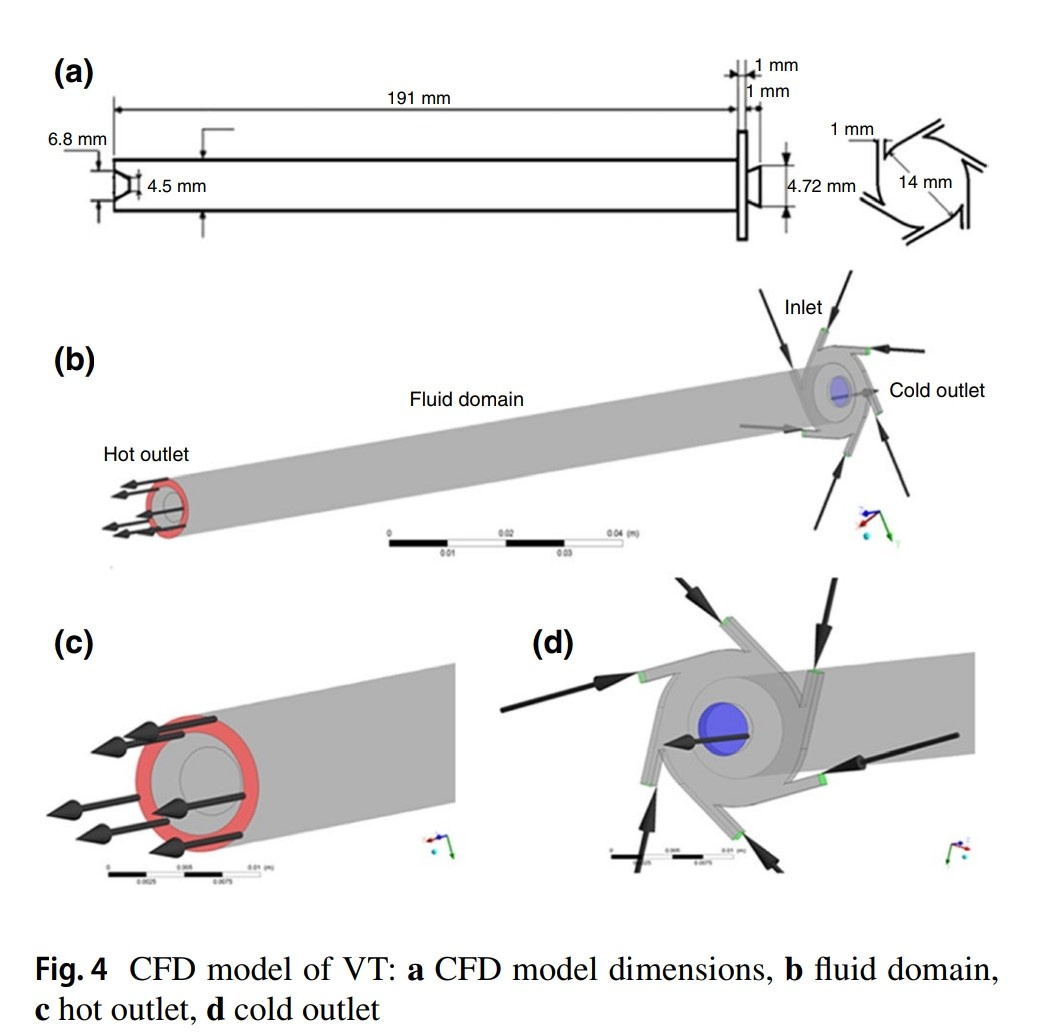TAGGED: ansys-fluent, fluent, mesh, mesh-generation, vortextube
-
-
November 18, 2020 at 11:13 am
david97
SubscriberHello Together,
I'm working on a vortex tube simulation for my school project and for some reason I cannot get an appropriate result, while the deadline is getting short.
I've already tried to copy a 3D model from an article to see if I can get appropriate results with that, used the same turbulence models, wall treatment, inlet pressure and temperature and outlet pressures as in the article however I cannot get the same results. I've used pressure inlet and pressure outlet boundaries and ideal gas model for the air, just as in the article. I've already tried using poly-hexcore and polyhedra meshes with and without boundary layers without success.
I've seen that the residuals do not decrease sufficiently and I've monitored some properties and I've seen that Fluent keeps changing the inlet pressures/mass flow rates rapidly during the solution. Could you help me please, what could cause this problem and what can be done to overcome this? I would really appreciate your help. Thank you in advance!
Model from the article:
November 18, 2020 at 11:19 amRob
Forum ModeratorYou've got no where near enough mesh in the vortex region. However, the fluctuations may be down to a precessing core: look up work by Nick Syred (Cardiff Uni) as a good starting point. What did you use for the inlet condition, and how fast is the flow? Post some images of the tangential velocity as that'll help explain what's going on. nNovember 18, 2020 at 8:54 pmdavid97
SubscriberHi Rob,nthank you for your response. I am taking a look at the work by Nick Syred, thank you for the recommendation. nWhat do you mean by the vortex region? The area near the inlet nozzles or the inner area along the complete tube length? How much more dense mesh would be enough in your opinion?nI've used the following inlet conditions, with 290 K inlet temperature.n Here's some pictures about the velocities in the domain:n
Here's some pictures about the velocities in the domain:n
 n
n n
n nn
November 19, 2020 at 12:21 pm
nn
November 19, 2020 at 12:21 pmRob
Forum ModeratorIt looks like the core is moving which will cause the jumpy reporting, but if you look at the tangential velocity it ought to be much faster around the perimeter: look how the flow behaves in the inlet channels and shape of the core in the main vessel. In terms of mesh resolution, if you replot the images with node values off you'll see how jumpy the results are: you need to avoid that. Have a look in the examples to get an idea on the mesh resolution, I think there are a few on cyclones which will also cover the basic physics you need to consider. nNovember 25, 2020 at 11:49 amdavid97
SubscriberThank you for your help Rob!nViewing 4 reply threads- The topic ‘Fluent changes the inlet pressure’ is closed to new replies.
Ansys Innovation SpaceTrending discussionsTop Contributors-
3572
-
1188
-
1076
-
1063
-
952
Top Rated Tags© 2025 Copyright ANSYS, Inc. All rights reserved.
Ansys does not support the usage of unauthorized Ansys software. Please visit www.ansys.com to obtain an official distribution.
-












